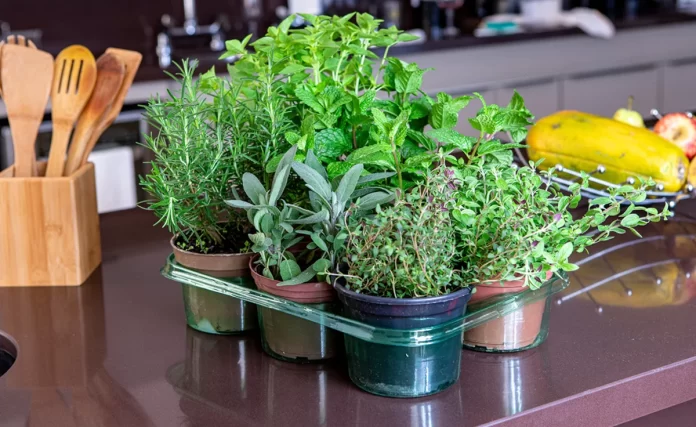In a world where fresh, homegrown food is becoming increasingly valued, growing herbs indoors offers both convenience and satisfaction. For city dwellers and those with limited outdoor space, creating a DIY indoor herb garden is not only achievable—it’s also an affordable and sustainable way to enhance everyday cooking. But how to create a DIY indoor herb garden successfully? The process is surprisingly straightforward, provided you follow some key steps that balance creativity with plant science.
Why an Indoor Herb Garden Matters
An indoor herb garden does more than just provide fresh ingredients. It brings greenery into compact spaces, purifies the air, and fosters a mindful connection to food. In tight urban apartments, indoor gardening is a form of accessible agriculture that transforms window sills and kitchen corners into thriving mini-farms.
This guide focuses on how to create a DIY indoor herb garden that suits modern living without requiring special equipment or professional gardening skills.
Table of Contents
ToggleStep 1: Choosing the Right Herbs for Indoors
Not all herbs thrive indoors. Some require more sunlight, while others are more adaptable to limited space and variable indoor temperatures.
Best Herbs for Indoor Gardening:
Basil: Loves warmth and sunlight; ideal for windowsills.
Parsley: Hardy and shade-tolerant; grows well near indirect light.
Chives: Compact and fast-growing; perfect for indoor containers.
Mint: Low maintenance but should be potted separately to prevent overgrowth.
Thyme: Thrives in small pots with moderate sunlight.
Cilantro: Grows quickly but prefers cooler indoor spots.
Selecting the right combination of herbs is essential to ensure year-round success.
Step 2: Finding the Perfect Spot
Indoor herbs need plenty of light, ideally 6-8 hours of sunlight per day. South-facing windows are the best option. For homes with limited natural light, consider using grow lights to supplement.
Key Location Tips:
Avoid placing herbs near heaters or air conditioning vents.
Ensure pots have proper drainage to prevent root rot.
Keep the herbs easily accessible for frequent use.
Successful indoor herb gardens depend on consistent light, moderate humidity, and stable temperatures between 18°C and 24°C (65°F – 75°F).
Step 3: Selecting Containers and Soil
Proper drainage is non-negotiable. Containers should have drainage holes to prevent water accumulation. For DIY enthusiasts, repurposed jars, wooden boxes, or teacups can add a creative, sustainable touch—just remember to drill drainage holes if necessary.
Recommended Soil:
Use a light, well-draining potting mix. Avoid dense garden soil, which can suffocate the herbs’ roots indoors.
Adding a layer of small stones at the bottom of the container can help with drainage if you’re using non-traditional pots.
Step 4: Planting and Arranging
When learning how to create a DIY indoor herb garden, spacing is critical. Overcrowding can lead to competition for light and nutrients.
Planting Tips:
Sow seeds according to packet instructions or use starter plants for faster results.
Group herbs with similar light and water needs together.
Label each herb to avoid confusion, especially when young plants look similar.
Creative arrangements, like vertical gardens or multi-tiered plant stands, can maximize space in small kitchens or apartments.
Step 5: Watering and Maintenance
Indoor herbs typically require less water than outdoor gardens, but consistency is key. Most herbs prefer slightly moist soil, but overwatering can quickly lead to root problems.
Maintenance Checklist:
Water when the top inch of soil feels dry.
Rotate plants weekly to ensure even light exposure.
Trim herbs regularly to encourage bushy, healthy growth.
Watch for pests like aphids, which can occasionally appear indoors.
Unlike ornamental houseplants, indoor herbs should be harvested regularly to promote ongoing growth and prevent legginess.
Step 6: Troubleshooting Common Problems
Yellowing Leaves: Often a sign of overwatering or poor drainage.
Slow Growth: May indicate insufficient light; consider moving the plant or adding a grow light.
Wilting: Check for dry soil or root-bound pots.
Moldy Soil: Reduce watering and improve air circulation.
Learning how to create a DIY indoor herb garden is a hands-on process, and some trial and error is natural, especially for beginners.
Bonus: Creative DIY Herb Garden Ideas
Hanging Mason Jar Gardens: Space-saving and visually striking.
Repurposed Wooden Crates: Rustic charm for windowsills.
Wall-Mounted Pocket Planters: Perfect for maximizing vertical kitchen space.
These creative options can make the herb garden a visual focal point as well as a practical cooking aid.
Final Thoughts: Growing Freshness Year-Round
Mastering how to create a DIY indoor herb garden is more than a home improvement project—it’s a step toward a more sustainable and health-conscious lifestyle. Whether you’re growing basil for summer salads or mint for winter teas, an indoor herb garden delivers fresh flavors at your fingertips all year long.
Accessible, affordable, and rewarding, indoor herb gardening brings nature closer and turns even the smallest urban home into a thriving, edible space.








